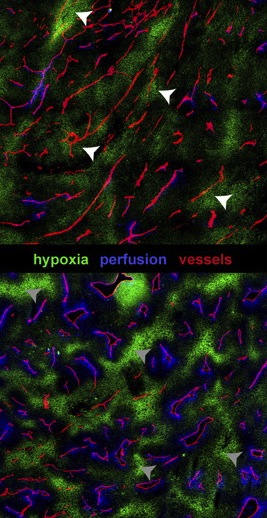
We evaluated and validated HX4 as a new non-invasive PET hypoxia marker. This study was performed using a rat tumor model, with known hypoxic fraction (see Dubois et al, BJC 2004 and Dubois et al, EJNM 2009). The database contains baseline (without oxygen modification) images from 4 rats (placed together on the PET/CT) at several time points post injection (2, 3, 4, 5 and 6h pi).
Imaging was performed using a dedicated PET/CT BiographTM scanner (SOMATOM TruePoint Sensation-40 with an ECAT ACCEL PET scanner, Siemens, CTI Knoxville) with an axial field of view (FoV) of 162 mm, a transaxial FoV of 605 mm and a spatial resolution of 5.3 mm full-width at half-maximum (FWHM) at the centre of the FoV. The acquired CT images were used for attenuation correction of the PET data. Also, corrections for scatter (3D), randoms, deadtime and decay of the injected radionuclides were applied.
After acquiring a topogram, a whole-body CT-scan was acquired using a 1 mm reconstructed slice thickness and a pitch of 0.8. Simultaneously with tracer injection (20.430 ± 2.418 MBq), a dynamic emission scan in list-mode (LM) was started for 60 min in 1 bed position encompassing the heart, tumor and hind legs of the rat. Afterwards, LM data were rebinned using Fourier rebinning and PET images were reconstructed as previously described (Dubois et al, BJC 2004).